Takashi Wada
Static Word Embeddings for Sentence Semantic Representation
Jun 05, 2025Abstract:We propose new static word embeddings optimised for sentence semantic representation. We first extract word embeddings from a pre-trained Sentence Transformer, and improve them with sentence-level principal component analysis, followed by either knowledge distillation or contrastive learning. During inference, we represent sentences by simply averaging word embeddings, which requires little computational cost. We evaluate models on both monolingual and cross-lingual tasks and show that our model substantially outperforms existing static models on sentence semantic tasks, and even rivals a basic Sentence Transformer model (SimCSE) on some data sets. Lastly, we perform a variety of analyses and show that our method successfully removes word embedding components that are irrelevant to sentence semantics, and adjusts the vector norms based on the influence of words on sentence semantics.
An Empirical Analysis of GPT-4V's Performance on Fashion Aesthetic Evaluation
Oct 31, 2024



Abstract:Fashion aesthetic evaluation is the task of estimating how well the outfits worn by individuals in images suit them. In this work, we examine the zero-shot performance of GPT-4V on this task for the first time. We show that its predictions align fairly well with human judgments on our datasets, and also find that it struggles with ranking outfits in similar colors. The code is available at https://github.com/st-tech/gpt4v-fashion-aesthetic-evaluation.
Disentangling Likes and Dislikes in Personalized Generative Explainable Recommendation
Oct 17, 2024



Abstract:Recent research on explainable recommendation generally frames the task as a standard text generation problem, and evaluates models simply based on the textual similarity between the predicted and ground-truth explanations. However, this approach fails to consider one crucial aspect of the systems: whether their outputs accurately reflect the users' (post-purchase) sentiments, i.e., whether and why they would like and/or dislike the recommended items. To shed light on this issue, we introduce new datasets and evaluation methods that focus on the users' sentiments. Specifically, we construct the datasets by explicitly extracting users' positive and negative opinions from their post-purchase reviews using an LLM, and propose to evaluate systems based on whether the generated explanations 1) align well with the users' sentiments, and 2) accurately identify both positive and negative opinions of users on the target items. We benchmark several recent models on our datasets and demonstrate that achieving strong performance on existing metrics does not ensure that the generated explanations align well with the users' sentiments. Lastly, we find that existing models can provide more sentiment-aware explanations when the users' (predicted) ratings for the target items are directly fed into the models as input. We will release our code and datasets upon acceptance.
A Fashion Item Recommendation Model in Hyperbolic Space
Sep 04, 2024Abstract:In this work, we propose a fashion item recommendation model that incorporates hyperbolic geometry into user and item representations. Using hyperbolic space, our model aims to capture implicit hierarchies among items based on their visual data and users' purchase history. During training, we apply a multi-task learning framework that considers both hyperbolic and Euclidean distances in the loss function. Our experiments on three data sets show that our model performs better than previous models trained in Euclidean space only, confirming the effectiveness of our model. Our ablation studies show that multi-task learning plays a key role, and removing the Euclidean loss substantially deteriorates the model performance.
Unsupervised Lexical Simplification with Context Augmentation
Nov 01, 2023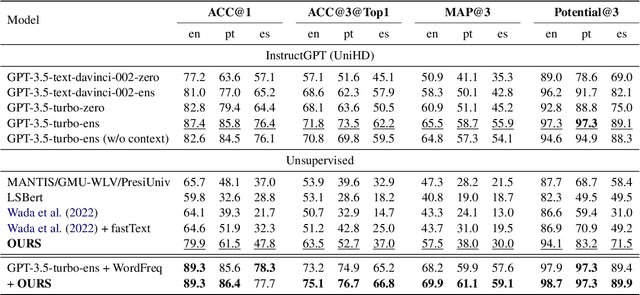
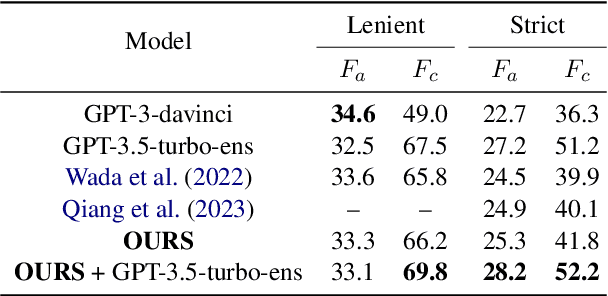

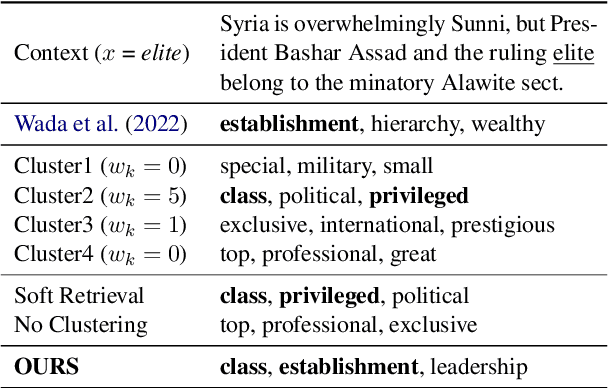
Abstract:We propose a new unsupervised lexical simplification method that uses only monolingual data and pre-trained language models. Given a target word and its context, our method generates substitutes based on the target context and also additional contexts sampled from monolingual data. We conduct experiments in English, Portuguese, and Spanish on the TSAR-2022 shared task, and show that our model substantially outperforms other unsupervised systems across all languages. We also establish a new state-of-the-art by ensembling our model with GPT-3.5. Lastly, we evaluate our model on the SWORDS lexical substitution data set, achieving a state-of-the-art result.
Unsupervised Paraphrasing of Multiword Expressions
Jun 02, 2023Abstract:We propose an unsupervised approach to paraphrasing multiword expressions (MWEs) in context. Our model employs only monolingual corpus data and pre-trained language models (without fine-tuning), and does not make use of any external resources such as dictionaries. We evaluate our method on the SemEval 2022 idiomatic semantic text similarity task, and show that it outperforms all unsupervised systems and rivals supervised systems.
Unsupervised Lexical Substitution with Decontextualised Embeddings
Sep 17, 2022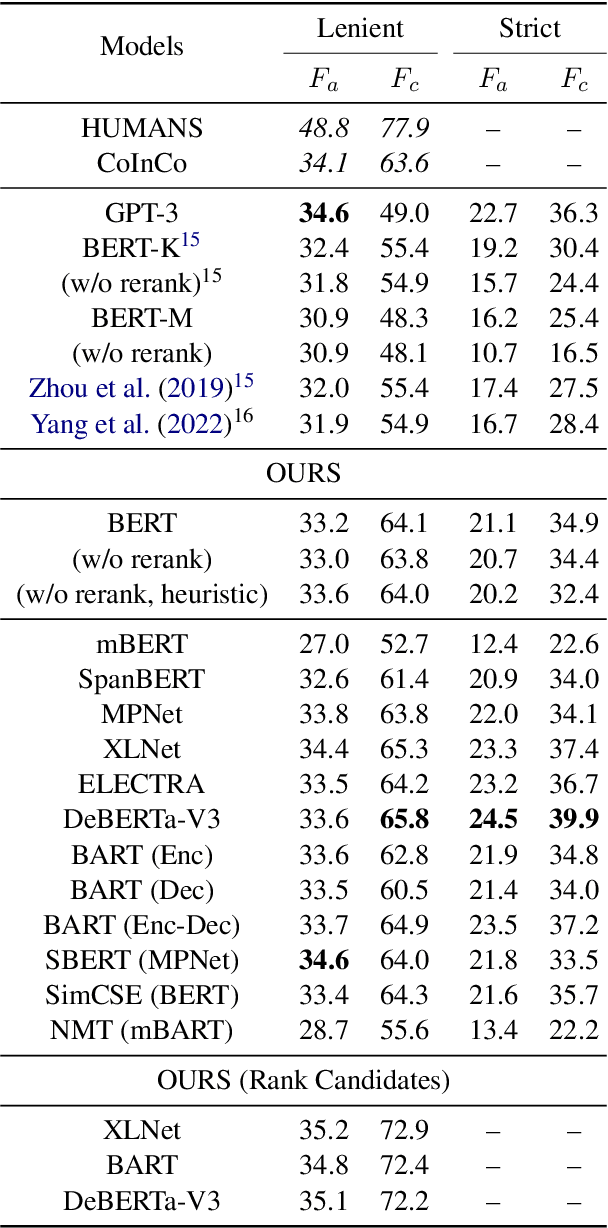
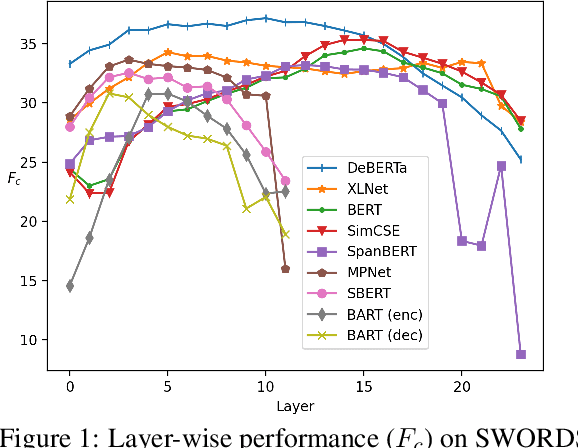

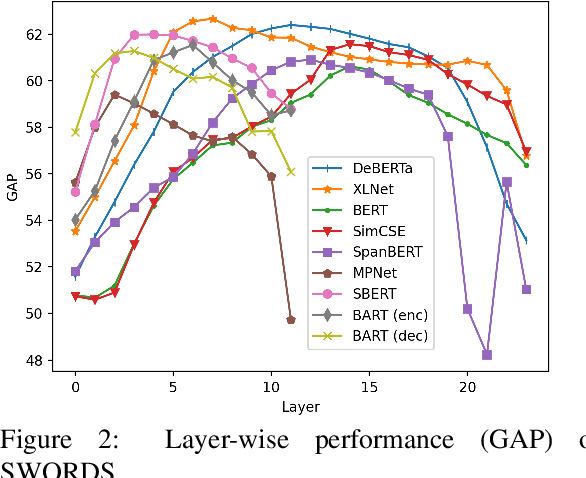
Abstract:We propose a new unsupervised method for lexical substitution using pre-trained language models. Compared to previous approaches that use the generative capability of language models to predict substitutes, our method retrieves substitutes based on the similarity of contextualised and decontextualised word embeddings, i.e. the average contextual representation of a word in multiple contexts. We conduct experiments in English and Italian, and show that our method substantially outperforms strong baselines and establishes a new state-of-the-art without any explicit supervision or fine-tuning. We further show that our method performs particularly well at predicting low-frequency substitutes, and also generates a diverse list of substitute candidates, reducing morphophonetic or morphosyntactic biases induced by article-noun agreement.
Learning Contextualised Cross-lingual Word Embeddings for Extremely Low-Resource Languages Using Parallel Corpora
Oct 27, 2020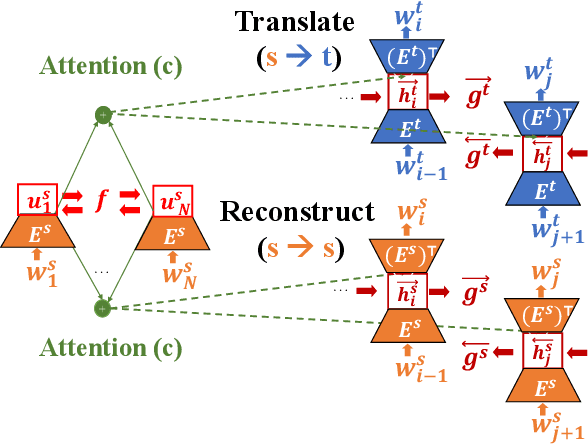

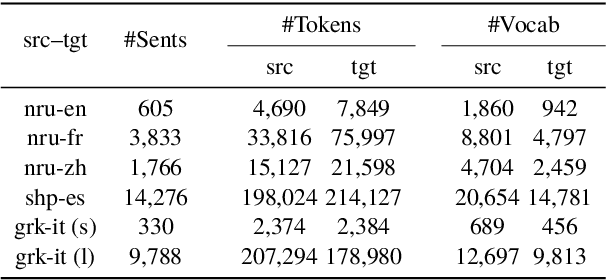
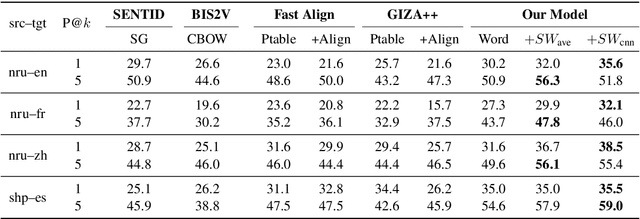
Abstract:We propose a new approach for learning contextualised cross-lingual word embeddings based only on a small parallel corpus (e.g. a few hundred sentence pairs). Our method obtains word embeddings via an LSTM-based encoder-decoder model that performs bidirectional translation and reconstruction of the input sentence. Through sharing model parameters among different languages, our model jointly trains the word embeddings in a common multilingual space. We also propose a simple method to combine word and subword embeddings to make use of orthographic similarities across different languages. We base our experiments on real-world data from endangered languages, namely Yongning Na, Shipibo-Konibo and Griko. Our experiments on bilingual lexicon induction and word alignment tasks show that our model outperforms existing methods by a large margin for most language pairs. These results demonstrate that, contrary to common belief, an encoder-decoder translation model is beneficial for learning cross-lingual representations, even in extremely low-resource scenarios.
Bayesian Optimization for Multi-objective Optimization and Multi-point Search
May 07, 2019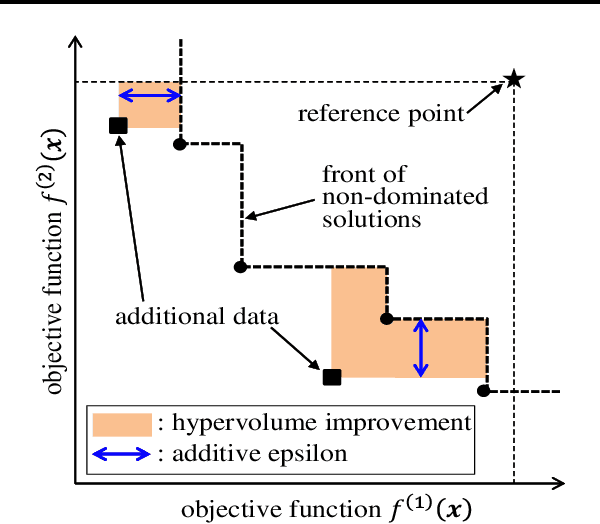

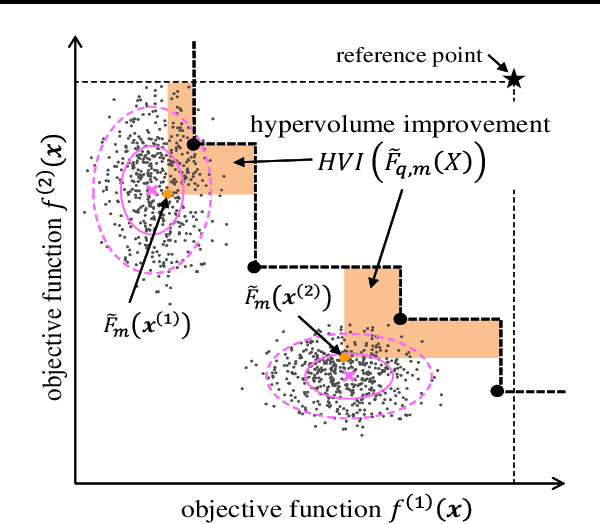
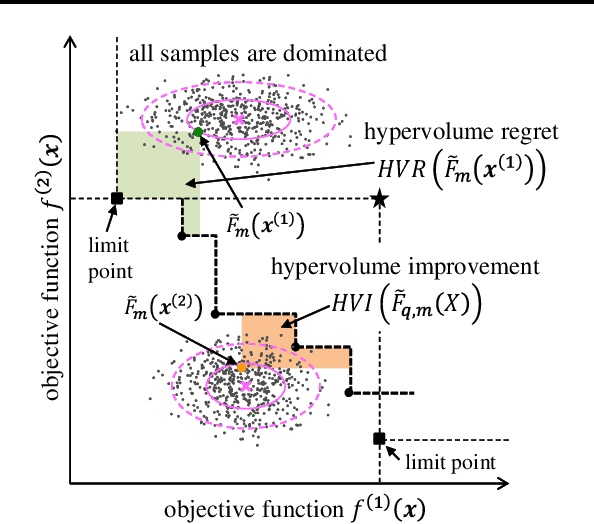
Abstract:Bayesian optimization is an effective method to efficiently optimize unknown objective functions with high evaluation costs. Traditional Bayesian optimization algorithms select one point per iteration for single objective function, whereas in recent years, Bayesian optimization for multi-objective optimization or multi-point search per iteration have been proposed. However, Bayesian optimization that can deal with them at the same time in non-heuristic way is not known at present. We propose a Bayesian optimization algorithm that can deal with multi-objective optimization and multi-point search at the same time. First, we define an acquisition function that considers both multi-objective and multi-point search problems. It is difficult to analytically maximize the acquisition function as the computational cost is prohibitive even when approximate calculations such as sampling approximation are performed; therefore, we propose an accurate and computationally efficient method for estimating gradient of the acquisition function, and develop an algorithm for Bayesian optimization with multi-objective and multi-point search. It is shown via numerical experiments that the performance of the proposed method is comparable or superior to those of heuristic methods.
Unsupervised Cross-lingual Word Embedding by Multilingual Neural Language Models
Sep 07, 2018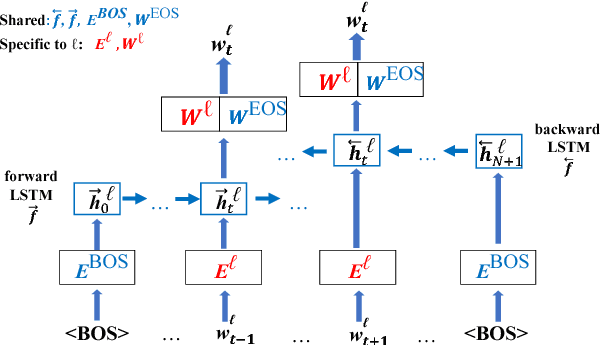


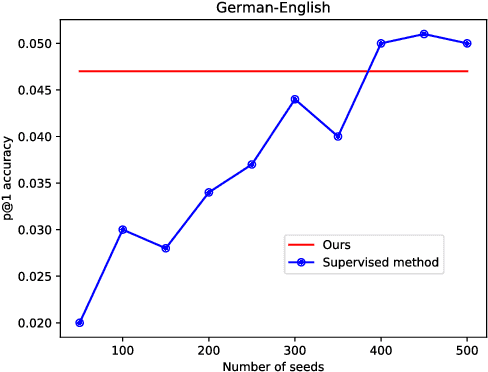
Abstract:We propose an unsupervised method to obtain cross-lingual embeddings without any parallel data or pre-trained word embeddings. The proposed model, which we call multilingual neural language models, takes sentences of multiple languages as an input. The proposed model contains bidirectional LSTMs that perform as forward and backward language models, and these networks are shared among all the languages. The other parameters, i.e. word embeddings and linear transformation between hidden states and outputs, are specific to each language. The shared LSTMs can capture the common sentence structure among all languages. Accordingly, word embeddings of each language are mapped into a common latent space, making it possible to measure the similarity of words across multiple languages. We evaluate the quality of the cross-lingual word embeddings on a word alignment task. Our experiments demonstrate that our model can obtain cross-lingual embeddings of much higher quality than existing unsupervised models when only a small amount of monolingual data (i.e. 50k sentences) are available, or the domains of monolingual data are different across languages.
 Add to Chrome
Add to Chrome Add to Firefox
Add to Firefox Add to Edge
Add to Edge